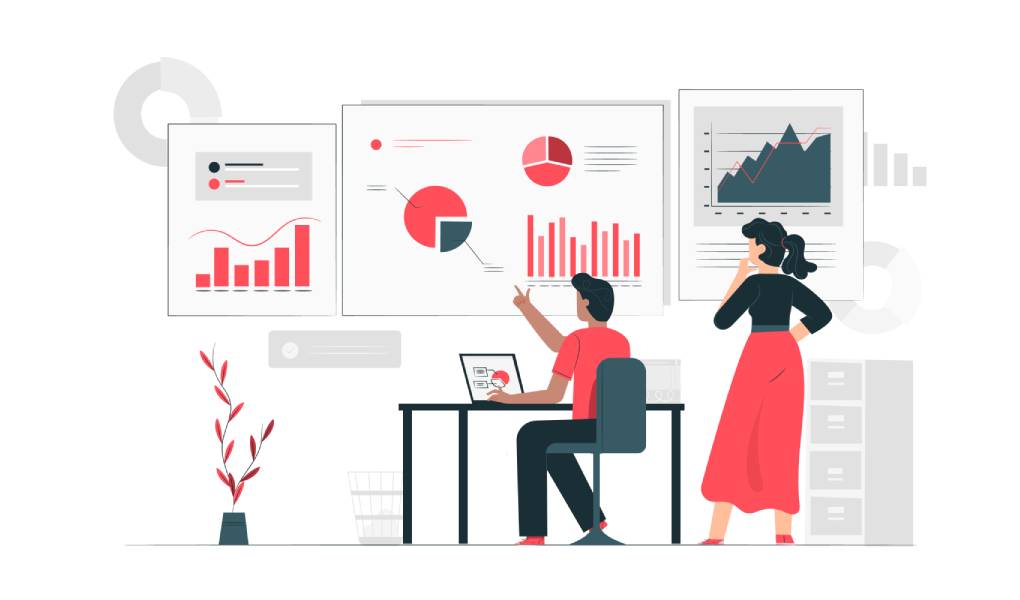In industry and energy, expensive and complex equipment is involved. Predictive analytics methods are used to avoid breakdowns, downtime, and non-optimal use to predict various events.
Such analytics are based on collected extensive data and machine learning methods. Let’s show how industrial and energy companies use predictive analytics to save and optimize production in actual cases.
Accident Prevention And Predictive Maintenance
Predictive analytics in the industry can predict breakdowns and malfunctions of equipment even before they occur: warn about the malfunctioning of machines, build repair and maintenance schedules.
British Petroleum is an energy company operating in 72 countries around the world. In oil and gas wells, drilling rigs, and other equipment of this company, some sensors collect information about temperature, vibrations, and other essential parameters. This helps notice the slightest changes in the operation of complex and expensive equipment in time and carry out repairs even before a breakdown. After implementing the system, the reliability of exploration and mining facilities increased from 88% to 95%. In addition, investments in big data, including predictive analytics, helped the company save $ 7 billion from 2014 to 2017.
Predictive analytics is especially good with complex but often failing equipment. For example, the Cherepovets Metallurgical Plant introduced predictive maintenance on the conveyor for the hot processing of metal products. The model reveals the likelihood of overheating the bearing of gear stands – one of the most frequent and resource-intensive reasons for the unit shutdown. This helps reduce line downtime.
Predictive analytics is very popular in the oil industry. The American corporation General Electric Oil & Gas also uses oil and gas equipment sensors. They automatically collect analytics systems’ data from scheduling diagnostic checks and planning maintenance. This helps reduce downtime, increase resource production and avoid losses associated with breakdowns and inefficient use of equipment.
Optimization Of Production And Mining
Using predictive analytics based on sensors, you can build machine tools and production models, evaluate the effect of introducing new machines and technologies, predict rejects, and distribute the load between machines.
The American company VELCO uses a predictive analytics system in the energy sector to forecast demand and, depending on this, produce different amounts of energy for the needs of consumers. In addition, with the help of analytics, they are planning the production of renewable energy, which is highly dependent on the weather. By the way, the Swedish Vattenfall and Danish Ørsted have similar solutions.
What is predictive analytics: predicting industrial accidents, making forecasts in retail and finance
Using the data collected from machine tools, it is also possible to build digital twins: to simulate a copy of a machine tool, a workshop, or an entire plant in virtual space, and then use this copy to test innovations. If everything goes smoothly in the double, you can introduce the innovation in the real plant.
For example, the oil company ADNOC, using its digital twin, assembled one virtual “super-enterprise” out of 20 of its enterprises. This control room allows you to manage all branches and standardize production processes.
Digital twins are also being created in Russia for optimization. For example, KAMAZ recently introduced them – they modeled more than 1,700 pieces of equipment to more closely study the processes occurring in production, optimize them and improve them.
With predictive analytics in the industry, you can control your entire production. For example, microcontroller manufacturer Simatic uses an IoT and machine learning platform. It helps to collect and analyze information from sensors on equipment in real-time. This helped automate the production of thousands of products by 75%, increase production volume by nine times with the same areas and personnel, and reduce rejects by almost 100%.
Also Read: How To Beat Your Business Competition (An Easy-To-Follow Guide)



